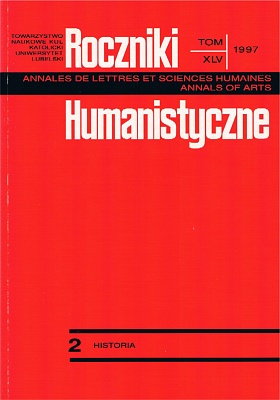Rozwój sieci parafialnej w dekanacie Pszczyna do końca XVIII wieku
Abstrakt
The paper seeks to show the parochial network in the Pszczyna decanate till 1795. Primarily the Pszczyna decanate belonged to Little Poland, then from 1178 it was part of Silesia. In the church organization the Pszczyna decanate belonged to the Kraków diocese, whereas within the framework of the latter to the Kraków archdecanate. The Pszczyna decanate was established in 1350; it was separated from the northern part of the Oświęcim decanate and made up of 8 parishes. Later yet three parishes were included in the decanate, the parishes which originally belonged to the Oświęcim and Sławków decanates. Then in the period from 1326 to 1598 9 new parishes and 2 chapels were erected, and in the period of 1599-1795 five new temples were built.
No foundation or erection document has been preserved as regards the churches of the Pszczyna decanate. The principal material that is at our disposal is the cross-sectional sources: the papal tithes and Peter's pence of the 14th c., the book of endowments of 1529, the book of contributions of 16th c. and visitations protocols of 1598, 1619, 1665 and 1720. Due to scarce sources it is necessary to use a special method of dating the temples, a method utilizing direct sources, such as: the size of parochial districts, a church's invocation, the relationships between tithes and property, the kind and size of benefices, patronage, the situation of settlements and analysis of Peter's pence fees.
On the basis of our studies on the origins of the parish we may state that in the Pszczyna decanate the parochial network was principally formed in the Middle Ages. Before 1325 ten parishes were founded, the number made 53 per cent of the total number of the parish and 39 per cent of all temples in the 18th c. (three parishes: Pszczyna, Mikołów and Lędziny are likely to have been founded as early as the end of the 12th c.). Nine parishes which were founded between 1326 and 1598 make 47 per cent of all the parishes and 42 per cent of all the parishes in 1795. In the years 1588-1795 only two filial churches were built and three chapels; this makes 19 per cent of all the sacred buildings in the decanate. Three churches lost their parochial rights.
Summing up the above numbers we may note that among the parishes of the decanate about half of them were founded in the 12th and 13th c., and the second half in the 14th and 15th c. It is worth noting the regions in which churches were built in particular periods. The ten oldest parishes are concentrated in the southern part of the decanate; in the north only two parishes were founded. It should be noted that these were two of the three oldest parishes of the decanate. The location of the churches may have resulted from the fact that the remaining areas were to a large extent covered with woods. The temples which were built in a later period, and they supplemented the existent parochial network in terms of their territory. It is only in the central part of the decanate that a certain territory was created which lacked church centres, for the are was covered with forests. The temples built during the 17th and 18th c. were located mainly in towns, where parochial churches had already existed.
In the case of a decided majority of parishes (65%) the Pszczyna prince was a patron of the churches, the nobility patronage constituted 30 per cent of the total, and only in one parish there was a bishop, which makes 5 per cent of the total.
An interesting element which helps to date a church is its invocation. The most often invocations were the following: All Saints, St. Clement, St. Hedwig, and St. Ann. Other invocations occurred only individually. In the territory of the Pszczyna decanate some views found in the literature have been confirmed. Thus the invocation to St. Nicholas is connected with the settlements through which trade routes run, as in the case of Mikołów. It has also been pinpointed in the literature that there is an analogy between the invocation to St. John the Baptist and the churches built on the banks of large water reservoirs. This view is confirmed in the Pszczyna decanate where the church with this invocation is found in Bojszowy on the Gostynia. Other views, however, which appear in the literature have not been confirmed, among other things, that the invocations to St. Idzi and St. Florian are typical of the Kraków diocese, the invocation which do not appear in the Pszczyna decanate. One should be careful when using invocations to date the origins of a parish, for we lack up to now a more profound study on invocation and the cult of saints.
Many questions connected with the development of the parochial network, especially in the Middle Ages, but also in modern times, must remain undecided. We do no know the primary parochial districts, property relationships in particular parishes, and the dating of the churches is only approximate. The reason for this is the scarcity of sources, presumably resulting from the location of the decanate at the outskirts of the decanate, and in some periods beyond the borders of the Polish Republic.
Copyright (c) 1997 Roczniki Humanistyczne

Utwór dostępny jest na licencji Creative Commons Uznanie autorstwa – Użycie niekomercyjne – Bez utworów zależnych 4.0 Międzynarodowe.





